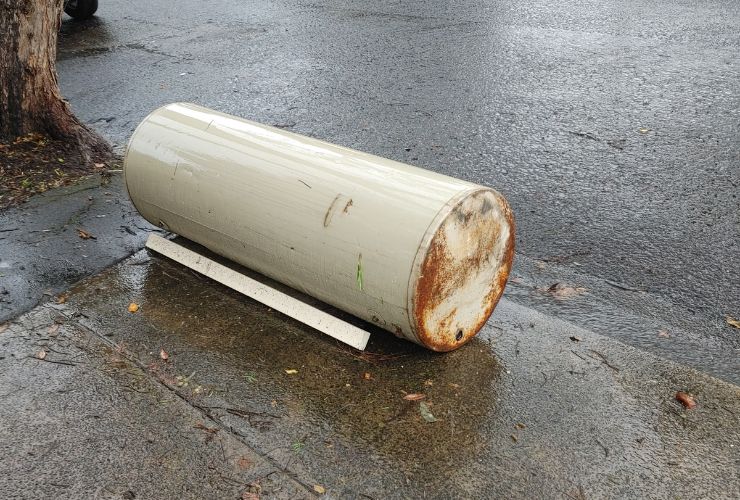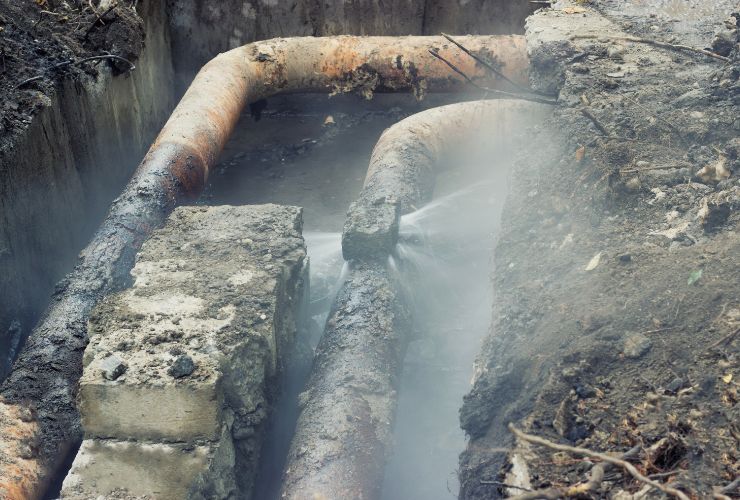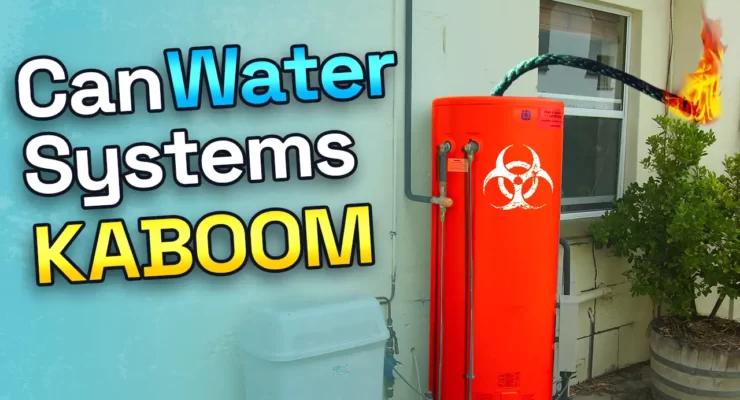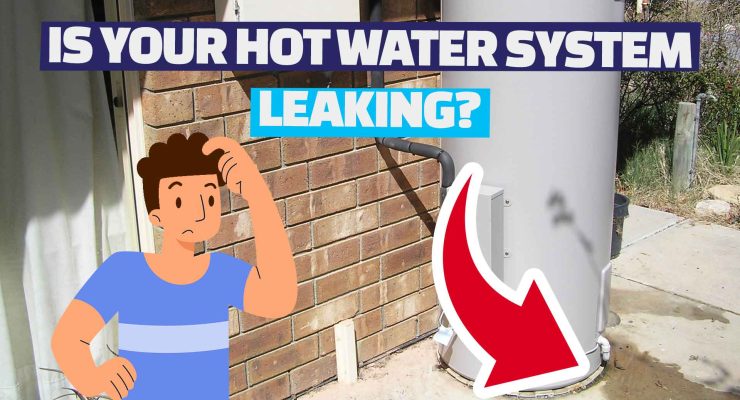Fast read
Hot water system explosions are exceedingly rare nowadays but can be extremely dangerous, with the risk of causing serious injuries. However, there are several modern safety mechanisms built into your hot water tank to prevent such accidents.
The most common cause of issues in hot water systems is a faulty pressure relief valve, which regulates the pressure within the hot water heater tank. If the valve leaks, it is a sign that the valve is stuck or that the components cannot handle the internal pressure and need professional attention. Sediment buildup in the tank and DIY jobs, especially on the thermometer can also cause problems that may lead to a hot water system rupture.
To avoid these issues, routine maintenance is important, and any signs of malfunction such as a failing pressure relief valve, abnormal noises, or brown water indicating internal decay should be checked by a professional plumber.
Is there a risk of my hot water heater exploding?
While a hot water heater can explode, it is extremely rare, but when they do occur, they can be dangerous. The force released can break through walls, with scalding water sometimes causing severe injuries. Nevertheless, several modern-day safety mechanisms prevent serious damage, so that this type of accident is literally impossible.
While it is exceedingly rare nowadays, there are several reasons your hot water heater could explode.
What could cause your hot water heater to explode?
Faulty pressure relief valve
The most common cause of issues of pressure built up in a hot water heater is a blocked pressure relief valve. As the name suggests, this valve regulates pressure within the hot water tank. As a result of the natural heating process and the creation of vapours/steam, pressure in the tank builds up.
Should the pressure inside the tank become too high, the pressure relief valve will release a certain amount of boiling water. But if this valve is broken, the pressure can build up, potentially leading to an explosion.
If you notice that your pressure relief valve leaks all the time or frequently, it is most likely a sign that the part has become stuck or become faulty. Also advisable to test and operate the pressure relief valve every 6 months just to check that it works.
How to test if the valve is working properly?
Go to your hot water tank; on the side, there is a copper pipe that looks like a spout, as it is open at the end. It usually finishes 10 to 20 cm above the ground if outside.
Up the top, where the pipe leaves the tank, is the location of the pressure relief valve. On top of it is a little hook, which allows you to test the valve. Push the hook/handle backwards till you hear water leaving the tank and spilling onto the ground.
Then let the handle go, and the valve should snap back into the close position. If the water continues to run after you let go, the valve is faulty, and you to to get it replaced. A faulty pressure relief valve can waste a lot of water over time and becomes expensive in regard to electricity costs and wasted water. So if you notice this valve leaking, it is recommended that you get it professionally looked at.

Sediment build-up
Another cause for concern is sediment build-up in your hot water tank. Failure to maintain your tank correctly can result in sand and mud entering through the water inlet, leading to sediment buildup.
Without regular tank flushing through usage, minerals in the water can cause sediment to accumulate at the tank’s bottom. This becomes a form of insulation, forming a crusty layer at the bottom of the tank that water could become trapped within. This could impact the ability of the tank to heat water.
The presence of a popping sound typically signals this issue: sediment accumulating at the tank bottom, posing a risk of overheating.
DIY jobs
While some Australians might believe that a standard hot water tank issue doesn’t justify contacting their plumber, many homeowners could face unexpected gas leaks or malfunctioning pressure valves without realising it. Replacing this valve or handling a tank leak without professional assistance is never advisable. Moreover, if you work on the system yourself, you void the warranty for your tank system.
Faulty thermostat
Each electric hot water system has an inbuilt thermostat, usually at the bottom of the tank, behind a square inspection cover. While in older electric hot water systems, one could set the temperature close to the boiling point, modern hot water tanks, even if in the hottest position, will only heat the water to about 65 degrees Celsius to avoid scalding, via the hot water outlet, especially in children.
A malfunctioning thermostat that can’t measure water temperature accurately might overheat the water, leading to increased pressure. If the pressure relief valve is blocked as well, the tank could theoretically explode.
Corrosion and rust in the tank because of age
If the tank or its parts are corroded, usually on the bottom, where sediments can build up, they can weaken the tunk structure and fail under pressure. This will, over time, lead to a rupture and is the most common reason for a tank failure, usually around years 8 to 12. If your water heater is old and showing signs of rust or corrosion via brown water leaving the tank and coming through the tap, it might be time to speak to a professional about replacing it.

High water pressure
High water pressure entering the tank increases the overall pressure inside the tank. Without a properly functioning pressure valve to relieve this pressure, there is a risk of an explosion. In modern water supply, it is highly unlikely your water pressure could reach a point where it could cause such damage.
How can I avoid a potential risk?
Regular maintenance is crucial to prevent your hot water heater from exploding. By engaging your local plumber, you can ensure that essential components are inspected and maintained properly. Transitioning from routine checks to specific actions, the plumber will meticulously examine the pressure relief valve and venting system. Moreover, they will prioritise the timely replacement of all components, including any sacrificial anodes. Taking these proactive measures not only enhances the longevity of your water heater but also minimises the likelihood of potentially dangerous incidents.
As mentioned above, you can self-test the pressure relief valve, check if your hot water suddenly has become much hotter, and monitor for signs of rust or corrosion.
If your hot water supply is extremely mineral or sediment-heavy, a plumber could drain the tank every 4-5 years to remove sediment. You can also ensure via the thermostat setting that you keep the temperature of your hot water heater set to between 49-51 degrees Celsius.



